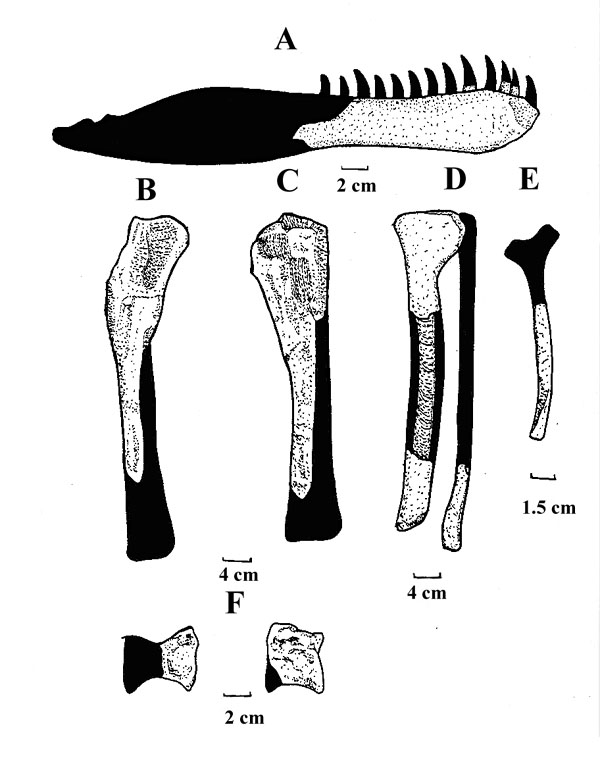
Species: nethercombensis (HUENE, 1926) HUENE, 1932
Etymology: For the region of Nethercombe, Dorset County, England, where the fossil was found.
= Megalosaurus nethercombensis HUENE, 1926
Holotype: OUM J. 12143
Locality: Nethercombe, 1 mile north of Sherborne, Dorset County, England, Southern United Kingdom.
Horizon: Middle Inferior Oolite.
Biostratigraphy: Stephanoceras humpriesianum zone.
Age: Bajocian Stage, Lower Dogger Epoch, Middle Jurassic.
Material: Fragmentary paired dentaries with teeth (/1), one dorsal vertebrae (/9b), both tibia , fragment of a fibula (/2), and fragment of right pubis (/3), paired femora (/6/7), and caudal vertebra (/8).

Referred material:
OWEN, 1857
Locality: Selsby Hill, Gloucestershire County, England, Southern United Kingdom.
Horizon: Inferior Oolite.
Biostratigraphy:
Age: Bajocian Stage, Lower Dogger Epoch, Middle Jurassic.
Material:
Number: Not given: Tooth.
Note: Originally referred to Megalosaurus bucklandi.
STEEL, 1970
Locality: Daston, Northamptonshire County, England, Southern United Kingdom.
Horizon: Inferior Oolite.
Biostratigraphy:
Age: Bajocian Stage, Lower Dogger Epoch, Middle Jurassic.
Material:
Number: Not given: Tooth.
Locality: Stanton, Wiltshire County, England, Southern United Kingdom.Horizon:
Biostratigraphy:
Age: Middle Jurassic.
Material:
Number: Not given: Tooth.
Locality: Enslow Bridge, Oxfordshire County, England, Southern United Kingdom.Horizon: Forest Marble.
Biostratigraphy:
Age: Upper Bathonian Stage, Lower Dogger Epoch, Middle Jurassic.
Material:
Number: Not given: Femur.